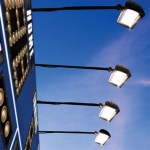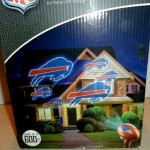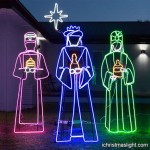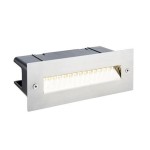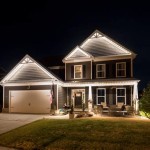```html
Outdoor Lighting Pole Commercial Design: Illuminating Function and Aesthetics
Outdoor lighting poles are integral components of commercial spaces, serving a dual purpose of providing illumination and contributing to the overall aesthetic appeal of the environment. Effective commercial outdoor lighting pole design involves a complex interplay of engineering principles, architectural considerations, and regulatory compliance. This article will explore the key aspects of outdoor lighting pole commercial design, highlighting essential considerations for creating functional and visually appealing lighting solutions.
Understanding the Purpose of Outdoor Lighting
Before delving into the specifics of design, it's crucial to understand the various purposes outdoor lighting serves in a commercial context. These purposes dictate the lighting requirements and influence the selection of appropriate lighting fixtures and pole designs. Safety is paramount, with adequate illumination preventing accidents and deterring criminal activity in parking lots, walkways, and building exteriors. Security lighting, often employing motion sensors and security cameras, enhances surveillance and provides a safer environment for employees and visitors. Wayfinding is facilitated by strategically placed lighting that guides individuals through the property, highlighting entrances, exits, and key landmarks. Finally, aesthetic lighting enhances the visual appeal of the commercial space, showcasing architectural features, landscaping, and branding elements. Well-designed lighting can improve the perceived value of the property and create a more welcoming atmosphere.
The specific needs of the commercial space will determine the priority of these purposes. For example, a warehouse or industrial facility may prioritize security and safety, while a retail space may focus on aesthetic appeal and wayfinding. Understanding these priorities is the first step in developing an effective outdoor lighting plan.
Key Considerations in Outdoor Lighting Pole Design
The design of outdoor lighting poles involves several critical considerations, ranging from structural integrity to aesthetic integration. Choosing the right materials is crucial for durability and longevity. Steel is a common choice, offering strength and resistance to corrosion, especially when treated with protective coatings. Aluminum offers a lighter-weight alternative with excellent corrosion resistance, making it suitable for coastal environments. Concrete poles provide a robust and aesthetically versatile option, often used in upscale commercial developments. The selection of the material should be based on the environmental conditions, budget constraints, and desired aesthetic.
Load calculations are essential for ensuring the structural integrity of the pole. These calculations must consider wind loads, ice loads, and the weight of the lighting fixtures. Proper engineering and adherence to relevant building codes are crucial to prevent pole failure and ensure public safety. The height of the pole is another critical factor, influencing the illumination area and the distribution of light. Taller poles can illuminate larger areas but may require more powerful lighting fixtures and raise concerns about light pollution. The height should be carefully considered in relation to the surrounding environment and the desired lighting effect.
Aesthetics play a vital role in the overall design. The style of the poles should complement the architectural style of the buildings and the overall landscape design. Various design options are available, ranging from classic to contemporary, allowing for customization to match the specific aesthetic requirements of the commercial space. Incorporating design features such as decorative bases, arm extensions, and color finishes can further enhance the visual appeal of the lighting poles.
The lighting fixtures themselves are a crucial aspect of the overall design. LED fixtures have become increasingly popular due to their energy efficiency, long lifespan, and superior light quality. They offer a wide range of color temperatures and light distribution patterns, allowing for precise control over the lighting effect. Choosing the right fixture type, wattage, and light distribution is essential for achieving the desired illumination levels and minimizing light pollution.
Integrating Sustainability and Efficiency
Sustainability is an increasingly important consideration in outdoor lighting pole design. Energy-efficient lighting solutions not only reduce operating costs but also minimize the environmental impact of the commercial space. Utilizing LED fixtures is a key step towards achieving energy efficiency. These fixtures consume significantly less energy than traditional lighting technologies and have a longer lifespan, reducing maintenance costs and waste. Implementing smart lighting controls can further enhance energy efficiency. These controls include dimming systems, motion sensors, and timers that adjust the lighting levels based on occupancy and ambient light levels. By optimizing the lighting schedule and reducing unnecessary illumination, these controls can significantly reduce energy consumption.
Light pollution is a growing concern, particularly in urban areas. Minimizing light pollution is crucial for protecting the environment and preserving the night sky. Selecting lighting fixtures with appropriate light distribution patterns and shielding options can help direct light where it is needed and prevent it from spilling into unwanted areas. Using lower color temperatures can also reduce light pollution, as blue light is more prone to scattering in the atmosphere. Dark sky compliant fixtures are designed to minimize light trespass and glare, making them an excellent choice for environmentally conscious designs.
Material selection also plays a role in sustainability. Choosing recycled materials or materials with a low embodied energy content can reduce the environmental impact of the lighting poles. Considering the lifecycle of the materials and selecting durable, long-lasting options can also minimize waste and reduce the need for replacements.
Compliance and Regulations
Outdoor lighting designs are subject to various regulations and standards, including building codes, zoning ordinances, and energy efficiency standards. Ensuring compliance with these regulations is crucial for avoiding penalties and ensuring public safety. Building codes typically specify requirements for structural integrity, electrical safety, and accessibility. Zoning ordinances may regulate the height, location, and light intensity of outdoor lighting fixtures. Energy efficiency standards, such as those established by the U.S. Department of Energy, set minimum efficiency requirements for lighting fixtures. Consulting with a qualified lighting designer or engineer is essential for navigating these regulations and ensuring compliance.
Proper documentation and permitting are also required for most outdoor lighting projects. Obtaining the necessary permits from local authorities is crucial for ensuring that the project meets all applicable regulations. The permitting process typically involves submitting detailed lighting plans, including pole locations, fixture specifications, and light distribution patterns. Working with experienced professionals who are familiar with the local permitting requirements can streamline the process and avoid delays.
In addition to local regulations, industry standards, such as those established by the Illuminating Engineering Society (IES), provide guidance on best practices for outdoor lighting design. These standards cover a wide range of topics, including illumination levels, light distribution, and glare control. Following these standards can help ensure that the lighting design meets the needs of the commercial space while minimizing environmental impact.
The Importance of Professional Design
While the principles of outdoor lighting pole design may seem straightforward, the complexities of engineering, aesthetics, and regulatory compliance often necessitate the expertise of a professional lighting designer or engineer. These professionals possess the knowledge and experience to develop effective and efficient lighting solutions that meet the specific needs of the commercial space. A professional designer can conduct a thorough site assessment to determine the lighting requirements, taking into account factors such as traffic patterns, security concerns, and aesthetic goals. They can then develop a comprehensive lighting plan that specifies the appropriate pole locations, fixture types, and control strategies.
Professional designers also have access to advanced lighting design software that allows them to simulate the lighting effects and optimize the design for energy efficiency and visual comfort. These simulations can help identify potential problems, such as glare or light trespass, before the installation begins. Furthermore, professional designers can assist with the selection of appropriate materials and fixtures, ensuring that the lighting system meets the required performance standards and aesthetic requirements. They can also provide guidance on regulatory compliance and assist with the permitting process.
Engaging a professional lighting designer or engineer can result in significant cost savings over the long term. By optimizing the lighting design for energy efficiency and minimizing maintenance costs, they can reduce operating expenses and improve the overall return on investment. Moreover, a well-designed lighting system can enhance the value of the commercial property and create a more attractive and welcoming environment for employees and visitors.
```
Area And Street Light Poles Mel Northey Co Inc

Street Light Poles Fixtures Commercial Led Pole Lights Wipro Lighting

Parking Lot Lighting Commercial Led Fixtures

Why Maintaining Your Light Poles Is Better For Business Gbl Inc

Parking Lot Lighting Commercial Led Fixtures

Street Light Poles 12m Decorative With Single Arm Hot Dip Galvanized Trunk Road 10m One Two Arms Powder Coated Round

Led Bollard Lighting China

8m 10m Aluminum Commercial Outdoor Lamp Post Street Light Poles For Road China Solar Made In Com

New Design Outdoor Road Pole Lamp 140lm W 100w 200w Commercial Led Shoebox Lighting China Area Light Lights Made In Com

Commercial Lighting Poles
Related Posts
